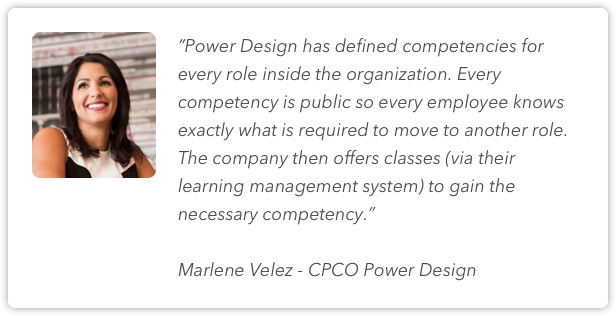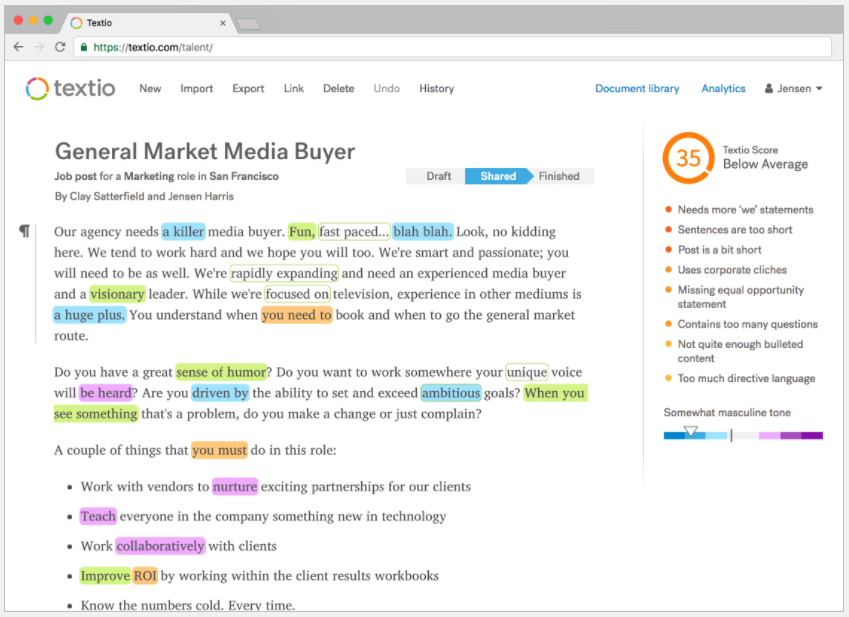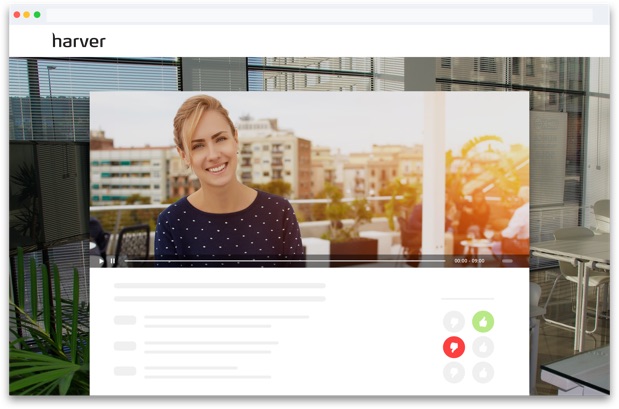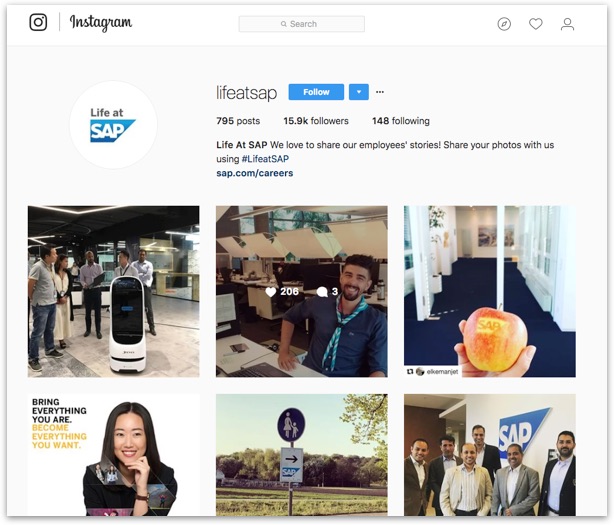Turnover amongst millennials costs $30.5 billion annually to the U.S. economy alone.
Now how is that possible you ask?
Because Millennials are slowly but surely starting to make up the largest generation of the workforce of most companies nowadays. And aside from that, what they look for in a job and/or career is very different than the things previous generations look for. Misalignment in values causes job hopping, and it’s this job hopping that costs billions.
And not just that. Hiring, onboarding and training someone just to see them leave, is a recruiter’s worst nightmare. Right?
Needless to say, in order to become a pro in hiring and retaining Millennials, you need a Millennial-focused hiring strategy. One that’s designed around their career goals and work-life expectations. Most companies understand this part. Yet, their hiring strategies are littered with easily correctable Millennial-hiring mistakes.
Like what you see?
Don’t miss out. Subscribe to our quarterly digest to get the latest TA and TM resources delivered right to your inbox.
These mistakes don’t just cost good candidates but also result in a high turnover rate.
That’s why today, we’re rounding up 9 common hiring mistakes many companies still make when it comes to hiring millennials. But not to worry, we’ll also show a bunch of quick ways to fix them!
No time to read the whole thing? On the bottom of every segment we noted the Key Takeaways of the segment. Might save you time! Happy reading!
1. Failing to highlight the opportunity to learn and grow
In order to engage people you have to know what drives them. Logically so, because once you know what gets someone out of bed in the morning, you can tailor your message in such a way that it resonates with them.
With just a little digging, you’ll find out that “career growth” tops the list of the most desirable job aspects Millennials look for.
Gallop’s Millennial workforce study found even, that a whopping 87% of Millennials care about career development when evaluating (or deciding to stay in) a job.
It’s hard to argue with research data. So, it’s safe to say millennials want career growth.
But despite all this data floating the web, most companies still tend to stick to standard hiring content and processes:
A jargon filled job listing on an old school job portal. A phone interview. A face-to-face interview. An assessment. And so on. Which is a pity, because the content you present in this initial phase of the hiring process can trigger a millennial in the right way. This in turn makes him or her love your employer brand from the start.
Some things you can do to improve on this part right away?
Start by adding terms like “personal development, career path planning and study-budget” to your job descriptions and career pages. It may seem like something small, but it means a lot to young candidates as it proposes some excellent career growth potential.
Power Design (an Inc 2017 Best Workplace) knows exactly how to leverage career development opportunities to attract Millennial talent like no other:
Key Takeaways: Put an emphasis on growth!

2. Failing to emphasize on job stability
Despite their job-hopping tendencies, If there’s one thing Millennials actually want from a job (besides personal growth) it’s stability.
And failing to promote said job stability is a big miss for many Millennial-targeting companies.
A stable job can mean a lot of different things to different people but when asked, stability mostly means a combination of the following:
- A great compensation
- Career advancement opportunities
- Good benefits
- Rich perks
- A retirement plan
- Friendly and transparent company culture and values
- Health insurance
- A healthy work-life balance
Now, of course, it’s not possible for every company to offer all of this. But no matter what mix you offer, again, just make sure you clearly advertise it.
Key Takeaway: Emphasise on the job stability factors upfront.
3. Writing uninspiring and cliche job descriptions
An early-stage Millennial hiring mistake companies make is using rehashed and boring job descriptions over and over again.
Millennials are quick to discard jargon-filled job descriptions that don’t appeal to their career goals and aspirations. To attract the top candidates, each element of your job description needs to speak to their career goals.
Tweaking parts of a job description to emphasise the following might be a good way to start:
- Career growth
- Benefits
- Perks
- Stability
- Company culture
Of course with everything, be sure you practise what you preach.
Think there’s some room for improvement in your job descriptions? Be sure to check out this article we wrote some time ago about this topic: excellent job description writing tips.
Furthermore, using augmented writing applications is a great way to help you adhere to a more millennial audience. Through a technique called Natural Language Processing (NLP) these apps can help you determine the right words for a specific audience.
In short: they ‘read’ what you’re writing and based on information in their database they give you synonyms for certain words.
For example, would you rather use the word ‘benefits’ or ‘perks’ when writing for millennials?
Regular Harver blog-readers already know, but check out Textio to see what I mean.
Key Takeaway: Write Millennial-focused job descriptions. If needed, technology can help you out here!

Textio helps you find your voice and write better texts for
whichever audience you choose.
4. Failing to give a preview into the company culture
A lot of companies fail to show their unique company culture when hiring Millennials (and not just millennials, but new hires in general).
Which makes sense. After all, it is quite hard to find the right tone-of-voice and visual style for your job descriptions and career page right? Unfortunately, for Millennials this is exactly what makes them press that apply button yes or no.
So yeah, a big miss. To quote some more research: 80% of Millennials look for people and culture fit with a new employer. And this is not just true for Millennials. Across generations, company or work culture is one of the top five considerations for job seekers. Failing to infuse this culture throughout your hiring process can cost you many top candidates.
When Millennials see a cohesive culture that matches with their personality, they’re drawn to it.
To work on this, take the company-culture-in-five-words test: Explain your company’s culture in five words.
Next, explore ways to show your Millennial candidates what your company culture is like. Adding employee videos to your careers/jobs pages will probably make a huge difference already. Want to go a step further? Add a Realistic Job Preview segment to your application process. It’s a tried and tested way to highlight your company culture and show applicants you care.
Key Takeaway: Add videos or a Realistic Job Preview segment to your hiring process.

Harver users can create Realistic Job Previews in a matter of minutes.
5. Offering a poor mobile experience
Now, this might sound like Millennial hiring 101 — but “mobile recruiting” is a thing. Especially when it comes to Millennial hiring.
Many companies feel that a mobile-friendly careers page does the trick. And although a mobile-friendly career page is a great first step, there’s more to it than that.
A proper mobile-first-recruiting-ecosystem goes way beyond a responsive website. It includes:
- The job search and ad websites (where you post and promote your listings)
- Your company website (or your careers page) along with your email communication
- The different career apps/solutions you use (ATS, screening, interviewing, etc.)
Unless all these are made mobile-friendly, your mobile application experience won’t be seamless. And Millennial applicants will keep dropping off.
A whopping 68% of Millennials search for jobs on their mobile phones. And a big percentage of them consume a lot of information about the employer right from their mobile phones.
Key Takeaway: Make mobile-friendly recruiting the norm to attract Millennial applicants.
6. Failing to frame Millennial-friendly benefits and perks
When hiring Millennials, a lot of companies use a standard benefits list.
Now, just like any other generation of candidates, Millennials too view a company’s benefits package as a key job evaluating factor.
And so when they don’t find the benefits that matter to them, they’re quick to dismiss a job.
To fix this, it’s important to learn about the benefits Millennials care for the most.
Forbes contributor Sarah Landrum suggests the following benefits::
- Healthcare
- Flexible Schedule
- Student Loan repayment
- Career and Personal Development
- 401(k)
Some companies are already tweaking their benefits packages to offer better career development and advancement opportunities to the Millennials.
Pay good attention to the benefits packages because when Millennials get similar offers, these benefits determine the offer they go with.
Perks too are important to Millennials as they influence their job satisfaction. Saurav Chopra, co-founder of Perkbox (an employee gift box company) tells that Millennials see company perks as “something employers should do as standard, whereas older employees see it as a bonus.”
Perkbox has found in its research that 69% of Millennial employees in the U.K associate company perks with their overall job satisfaction.
Key Takeaway: Point out your Millennial friendly benefits upfront.
7. Running an unstructured hiring processes
Running an unstructured or even broken hiring process is hiring mistake companies make. Especially because this one directly results in a bad candidate experience.
Now, because Millennials get more job offers as compared to Gen X, they can refuse to work with or buy products of a company with which they’ve had a bad candidate experience.
And they do.
Adam Robinson, the co-founder and CEO of Hireology notes that Millennials “are the most likely generation to not do business with a company where they have had a poor experience as a job applicant.“
Unfortunately, fragmented hiring isn’t so uncommon. You’ll be surprised to know that more than 90% of companies lack an efficiently structured hiring process.
Building a streamlined hiring process is the first step towards attracting quality Millennial talents. Luckily there are many organizations out there that created solutions that aid you in structurizing these processes. One of such organizations is Tallyfy. Big plus about Tallyfy (besides its 15 minute setup time!) is that it’s not only useful for recruitment and HR processes, but can be used company-wide! It’s never been easier to get buy-in from different department heads!
Beyond streamlining your process, explore how data-driven recruitment solutions can help you offer stellar candidate experiences.
Read all about this in the case we did with retail giant Zappos. Spoiler: they achieved a candidate satisfaction rate of 97%!
Key Takeaway: Run a structured hiring process. Technology can help you out!
8. Ignoring employer branding
It’s common to see companies make employer branding mistakes. For example, running an outdated careers page. Or forgetting to respond to negative employee reviews on sites like Glassdoor. Or failing to build or promote a strong company culture.
But Millennials aren’t as forgiving. They take these signals into account when applying to a company or accepting an offer.
The thing is that Millennials want to be sold to. They want employers to prove they’re worth working for. 68% of Millennials visit a company’s social media properties just to evaluate the employer brand. Strong employer branding is the the proof they seek. As with everything, it’s about purpose and a sense of belonging.
As a rule, companies that invest in employer branding attract better candidates. As one of its efforts to revamp its hiring process to attract Millennials, SAP started the Life at SAP Instagram account. SAP uses it to share its employer stories.
Likewise, think of content-packed ways you can build a strong employer brand. Here are five effective employer branding tactics you can try.
Key Takeaway: Put effort in building your employer brand. If you don’t have an Instagram profile that displays your culture yet, put it on top of your to-do list.

SAP runs a succesful ‘life at SAP’ instagram account with 15.9k followers!
That’s a pretty big talent pool!
9. Lacking a Millennial engagement model
All that you’ve heard about Millennial job-hopping isn’t true. In fact, a study done by Deloitte found that millennials are, in fact, willing to stay longer (for about five+ years!) in a company if they get certain benefits.
But companies simply don’t know how to retain the, they lack an engagement model.
The key to making Millennials stay is finding out what makes them tick and building an engagement model around them.
For example, Millennials care about growing their leadership skills and getting promoted. Fast. Which means training programs that accelerate their leadership career trajectory will engage them. But you’ll be surprised to learn that only 7% of HR leaders run accelerated leadership programs for Millennials.
Find out how you can engage your Millennial recruits better and design programs based on them.
Key Takeaway: Setup training and/or accelerated leadership programs for Millennials.
Wrapping it up
A workforce can have about five generations of professionals and each of these generations has its own specific motivations.
Just like any other hiring strategy, a Millennial-focused hiring strategy too isn’t applicable to everybody. But with the Millennial generation slowly growing to the the most prominent generation on the work floor, make sure you have something in place to adhere to them.
Strive for a balance that minimizes generation friction and builds an optimal team. Ultimately, you want your entire workforce to perform their best everyday.
For more inspiration, check out the best 2017 workplaces for Millennials and see how they’re framing their hiring strategies and policies.
Stop guessing,
Start data-driven hiring.
Learn how you implement a modern candidate selection process, that is: streamlined, experience-driven and backed by data.



